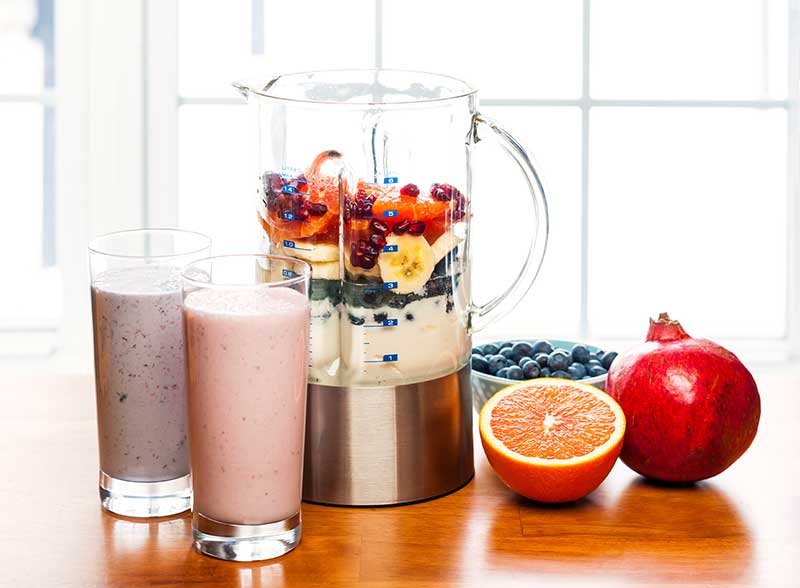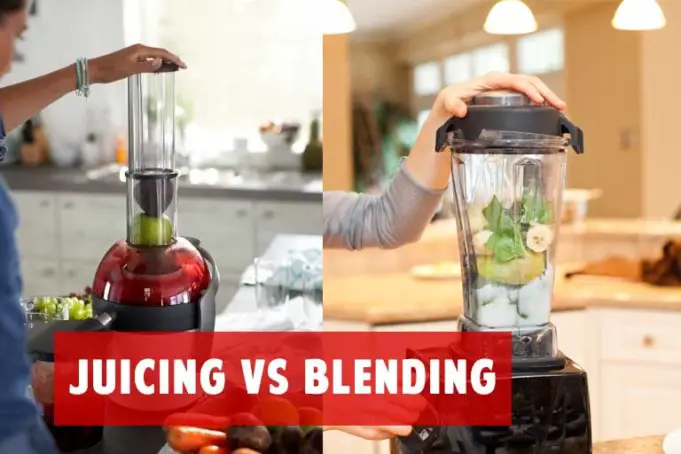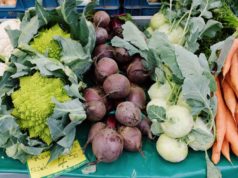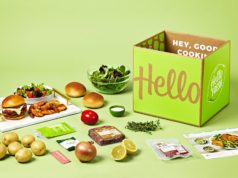We all understand enough about our health and the things we should and shouldn’t be eating to know that fruit and vegetable juices are good for us, as long as long as we make them from home using good ingredients. That’s no longer a debate, and we’ve accepted it as a fact. Where debate still exists, though, is on the best way to consume our fruit and vegetable drinks. Is it better to juice them, or is it better to blend them?
There are many proponents of both methods, with some people sitting on the fence who feel like it doesn’t make a difference either way. They’re wrong. We think that both approaches have their benefits, but to say there isn’t a difference isn’t accurate. There are some things juicing achieves better than blending, and vice versa. If you subscribe to one method but not the other, then read on to find out where you could be missing out.
 The Basics of Blending
The Basics of Blending
The most significant difference between blending and juicing is that with blending the entire fruit or vegetable is used. You don’t peel, skin or otherwise alter your ingredients (other than washing them); you just put them in the blender and let the machine do its work. At the risk of stating the obvious, that means you’re getting more than just the juice; you’re getting the fiber that comes with it as well.
The fiber plays a vital role in the way your body deals with consuming the blended drink. Although going through the process of blending does break the fiber down, it still slows the release of energy into your body, giving you a slower and more consistent nutrient ‘hit’ over time.
There’s also a time and cost benefit to blending; because you’re just throwing the ingredients into the blender, your drink is available almost instantly. That means it’s easy to do in the mornings, or even during a five minute break at work so long as there’s a blender to hand. We say it’s cheaper because you use fewer ingredients to make a blended drink; because the whole ingredient goes in, the final product is thicker and has more volume. You’ll go through your ingredients more slowly, and so you’ll spend less money.
Although we won’t say that blending is outright better for you than juicing (we’ll go into the positives of juicing in a moment), it does represent a more rounded meal choice, and one that your body absorbs more easily.
The Basics of Juicing
At its core, juicing is merely removing the nutrient and water content of your ingredients and consuming that, with everything else discarded. Proponents say that this is better for you because you’re discarding all the elements of the food that cannot be digested, and as a result, the nutrients and other positive elements of your drink are absorbed into the body faster.
Because your body doesn’t accidentally discard any of the nutritional aspects along with the fiber, you get more from consuming your fruit and vegetables this way than you would by eating or blending them.
There are obvious positives to this. As well as getting more of the things you need into your body at a higher speed, you’re also taking on fewer empty calories, which is why juicing is often included as part of many diet plans. People who have digestive issues or sensitive stomachs are far less likely to encounter issues with juicing than they are with blending because it’s usually fiber intolerance which is either the trigger to or symptom of their health problems.
All of the above makes it sound like juicing is superior to blending, but that’s not necessarily the case. For a start, without the fiber and other elements, a juice isn’t truly a ‘meal,’ and one of the reasons it works as a diet choice is because it doesn’t provide your body with much in terms of food beyond the nutrients. You’re unlikely to be hungry after consuming a blended drink. That isn’t the case with a juice.
Secondly, and perhaps of more concern, the fact that your body consumes the nutrients from juicing so quickly can actually be a health hazard. Pure fruit juice contains a lot of sugar, and sugar rushes aren’t good for you. A sudden spike in your blood sugar level could imbalance both your mood and your energy levels, and those are only the less serious side effects. Studies have shown that excessive fruit juice intake can aggravate or even cause type 2 diabetes.
That’s not to say that juicing is bad for you; it just serves as a reminder that we should be careful about the precise balance of the ingredients we use.
Getting The Balance Right
With that in mind, it’s important to know best practice when it comes to both juicing and blending. That starts with not mixing and matching too much. Yes, it’s fun to play fast and wild with ingredients and throw vegetables into the mixer with fruit, but it’s not the best thing for your body.
A lot of vegetables contain high levels of starch, which is especially true of blending favorites like carrots and beetroots. That makes them a bad digestion combination when you mix them with fruit, because our bodies use two different enzyme types to break the foods down.
The best approach is to follow the example of the fruit-themed Reel Rush fruit slot, where money is won by matching up the right kinds of fruity ingredients. Match up the correct fruit symbols in the slot game, and it will reward you by paying out in cash. Match up the right ingredients in your drink, and it will reward you in terms of nutrition and easy digestion.
If you get it wrong in the slot, the only downside is you’ll get nothing instead of a jackpot. Get it wrong in real life, and you could be looking at stomach pains and gas for the next couple of hours.
On top of that, and whichever method you choose, remember that it’s always best practice to consume your drink straight away once you’ve made it. It doesn’t take very long for both light and air to start negatively impacting the nutritional content of your drink when it’s left in the open. If you can’t drink it immediately, quickly pour it into an airtight container and enjoy it risk-free later on.
Do you have strong feelings either way? Any best recipes to share? Let us know by leaving a comment down below!













Interesting read. I have never been a big fan of either juicing or blending and prefer to eat my fruits and vegetables raw or cooked vegetables. If I were to chose I would go with blending, since it is easy to just throw things in.